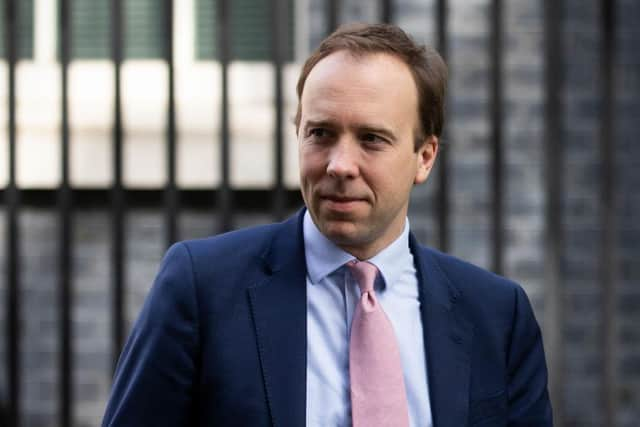Covid Tier 2: rules and restrictions explained and full list of areas in ‘High Alert’ levels of England’s new local lockdown system
More areas across England will face the toughest Covid restrictions, health secretary Matt Hancock has confirmed.
The government has already announced on Monday 14 December that London will move from Tier 2 to Tier 3 – the highest level of restrictions from 16 December.
Advertisement
Hide AdAdvertisement
Hide AdAnd other areas, including parts of Essex and Hertfordshire, have followed from Tier 2 to Tier 3 ahead of Christmas, following the completion of the tier review.


England’s revised three tier Covid alert system came into effect following the end of the second national lockdown – it saw York and North Yorkshire placed in Tier 2 and West Yorkshire and South Yorkshire placed in Tier 3.
What areas in England are in Tier 2?
| East of England: Bedfordshire and Milton Keynes Cambridgeshire, including Peterborough The following local authorities in Essex: Colchester Tendring Uttlesford The following local authorities in Hertfordshire: Dacorum East Hertfordshire North Hertfordshire St Albans Stevenage Welwyn Hatfield Norfolk Suffolk East Midlands: Northamptonshire Rutland North West: Cumbria Liverpool City Region Warrington and Cheshire South East: Bracknell Forest Brighton and Hove Buckinghamshire East Sussex Hampshire, including Portsmouth and Southampton Oxfordshire Reading Surrey West Berkshire West Sussex Windsor and Maidenhead Wokingham South West: Bath and North East Somerset Bournemouth, Christchurch and Poole Devon, including Plymouth and Torbay Dorset Gloucestershire (Cheltenham, Cotswold, Forest of Dean, Gloucester, Stroud and Tewkesbury) Somerset (South Somerset, Somerset West and Taunton, Mendip and Sedgemoor) Wiltshire and Swindon West Midlands: Herefordshire Shropshire and Telford & Wrekin Worcestershire Yorkshire: City of York North Yorkshire | |
What areas in England have moved from Tier 2 to Tier 3?
| London: All 32 boroughs plus the City of London. Local authorities in Hertfordshire: Broxbourne Hertsmere Three Rivers Watford Local authorities in Essex: Basildon Braintree Brentwood Castle Point Chelmsford Epping Forest Harlow Maldon Rochford Southend-on-Sea Thurrock | |
What are the rules for Tier 2?
Advertisement
Hide AdAdvertisement
Hide AdThe revised three tier alert system came into effect across England at 00:01 on 2 December following the end of the second national lockdown.
It means that people who live in an area placed in Tier 2 can meet up outside with others under the Rule of Six, but households will not be able to mix indoors.
Restaurants, hospitality venues and pubs that serve substantial meals can reopen and stay open until 11pm, though only serve alcohol until 10pm.
Pubs and bars that don’t serve substantial meals won’t be able to open.
Advertisement
Hide AdAdvertisement
Hide AdGrassroots sport can resume outside, along with physical activity and exercise classes. These are permitted indoors if people can avoid mixing with others they don’t live with.
Spectators will be allowed back into stadiums to watch sport, with a maximum of 2,000 people attending or 50% of the ground’s capacity, whichever is smaller. The maximum capacity indoors is 1,000 spectators.
Places of worship remain open, though you must stay in your household or support bubble inside, while 15 people can attend weddings and 30 people are permitted to attend funerals.
Can I travel to Tier 1 and Tier 3 areas?
The government’s advice is to reduce the number of journeys made wherever possible, but people can still travel to venues open in other areas.
Advertisement
Hide AdAdvertisement
Hide AdBut, if you live in a Tier 2 area, you must continue to follow Tier 2 rules even in a Tier 1 area, while travel and overnight stays to a Tier 3 is to be avoided with some exceptions such as medical treatment.
How did the government decide on the tiers?
Five key factors were considered by the government in deciding which area was placed under which tier.
The government looked at the case detection rate in all age groups, how quickly case rates were rising or falling, percentage of positivity in the general population, pressure on the NHS and local context such as contained outbreaks.
